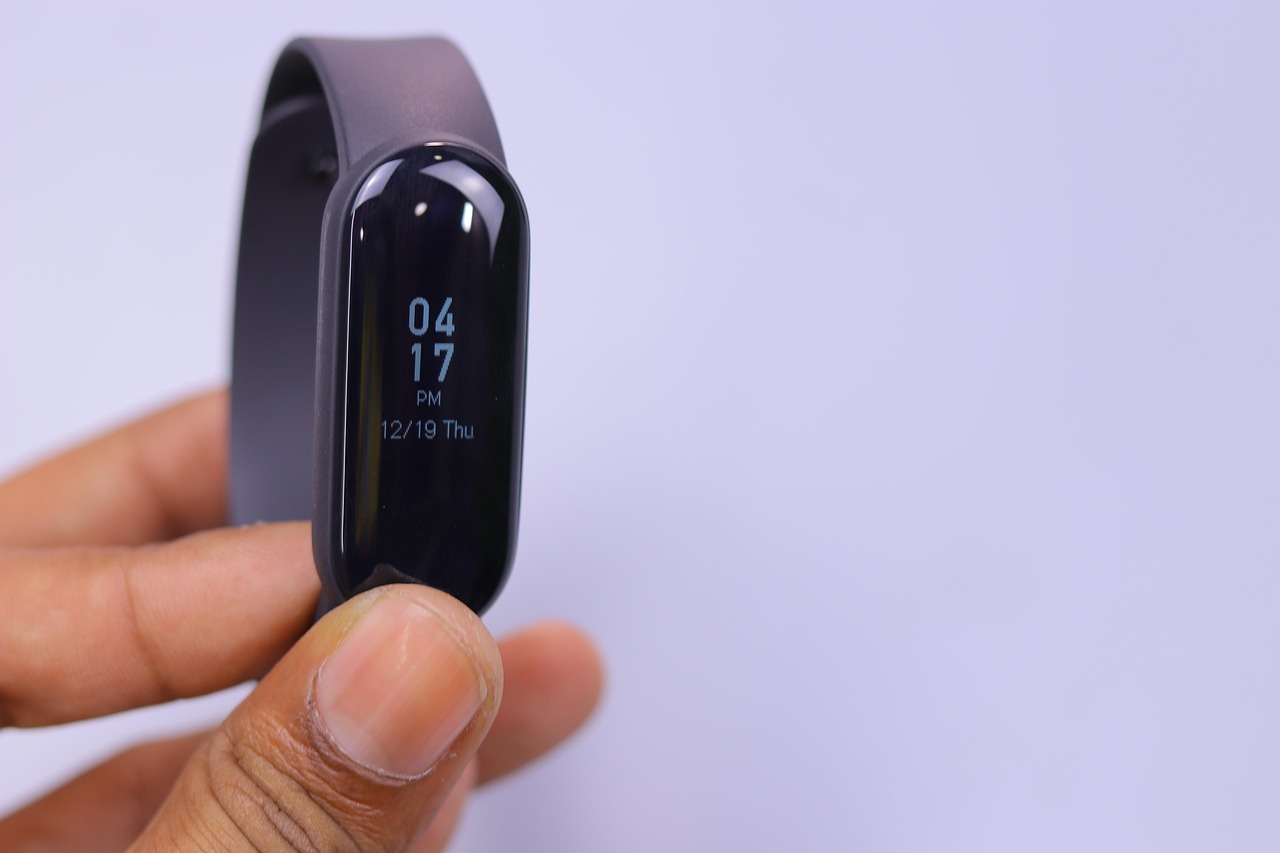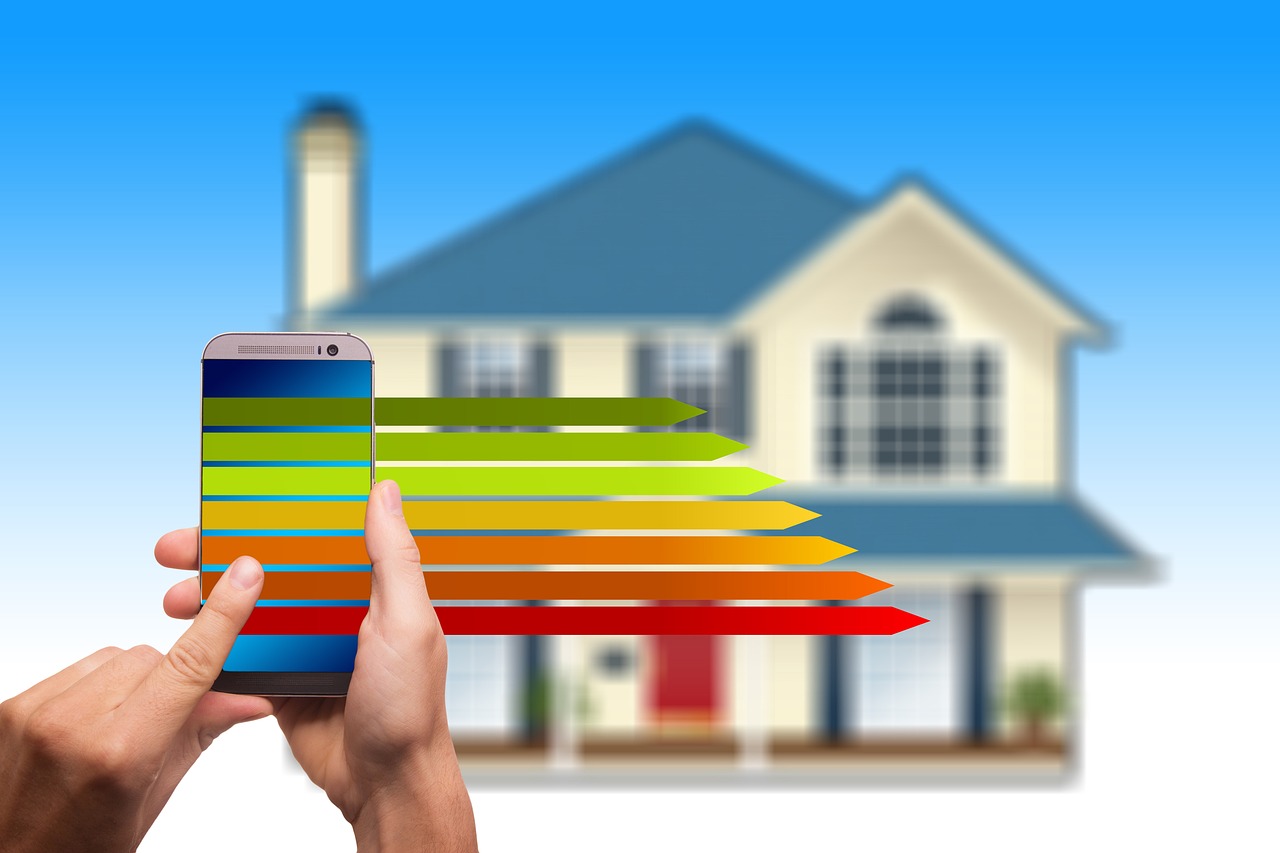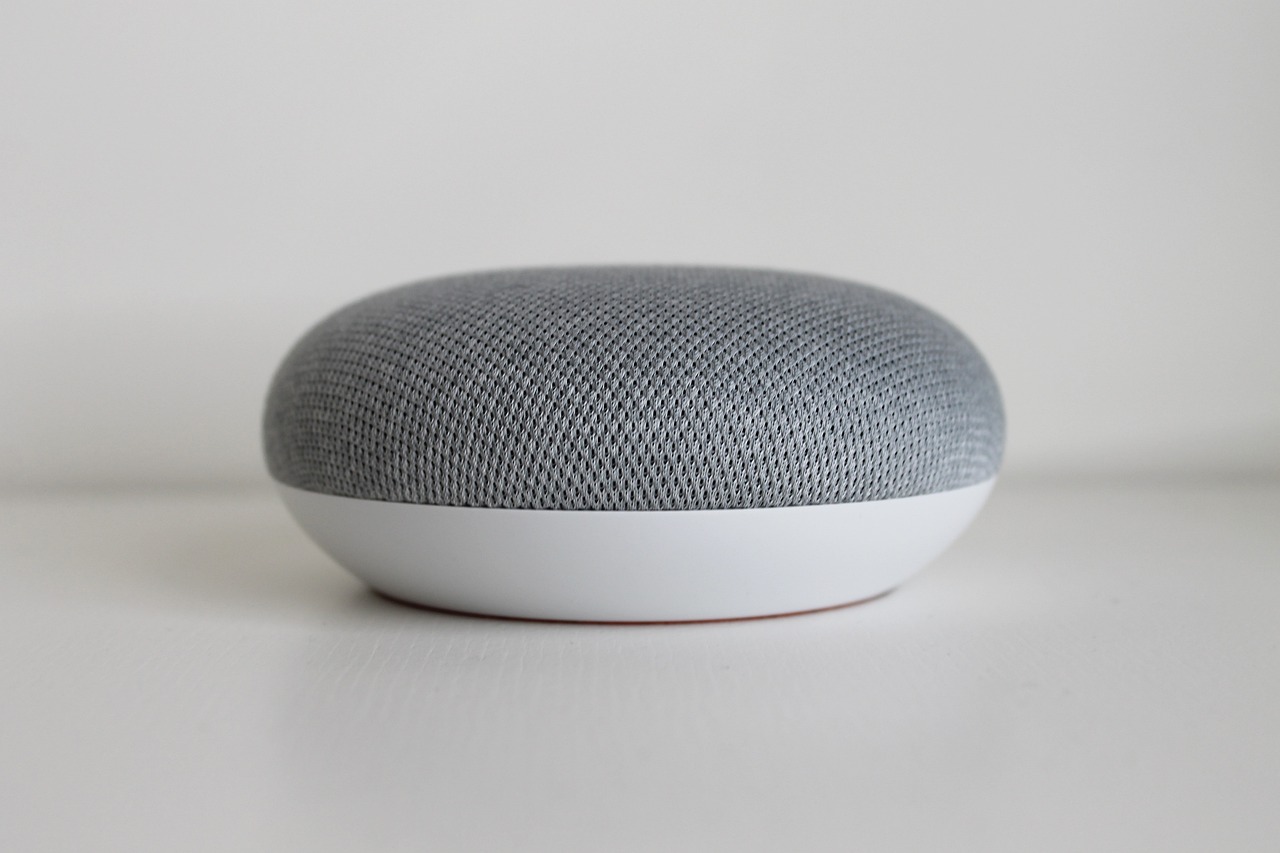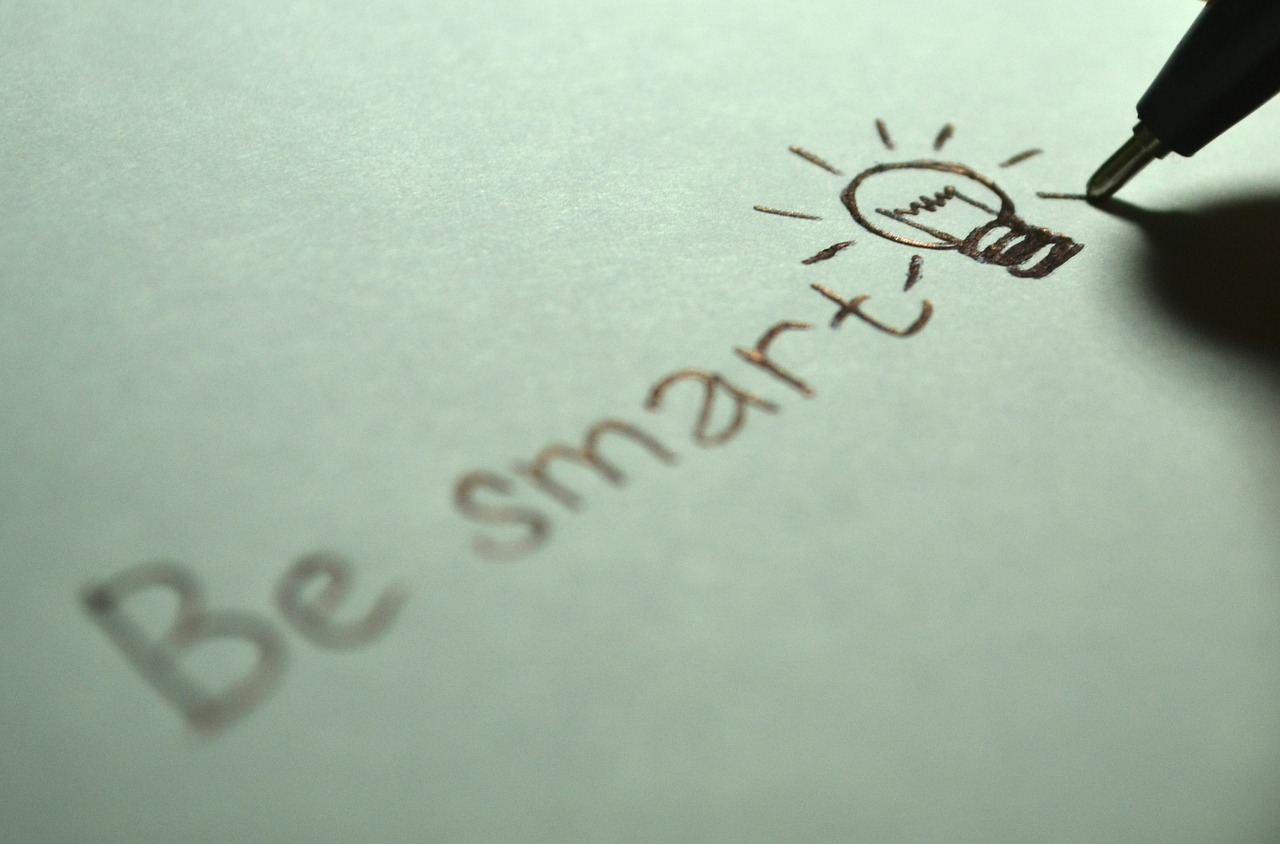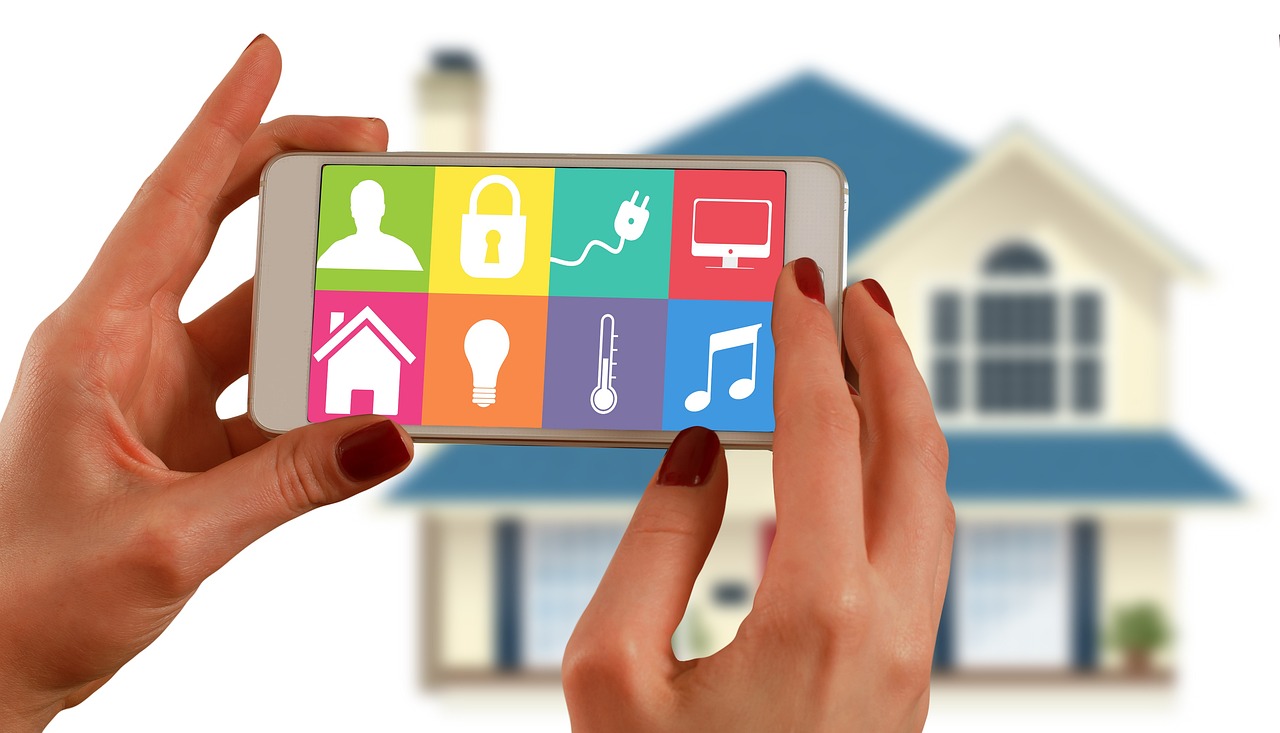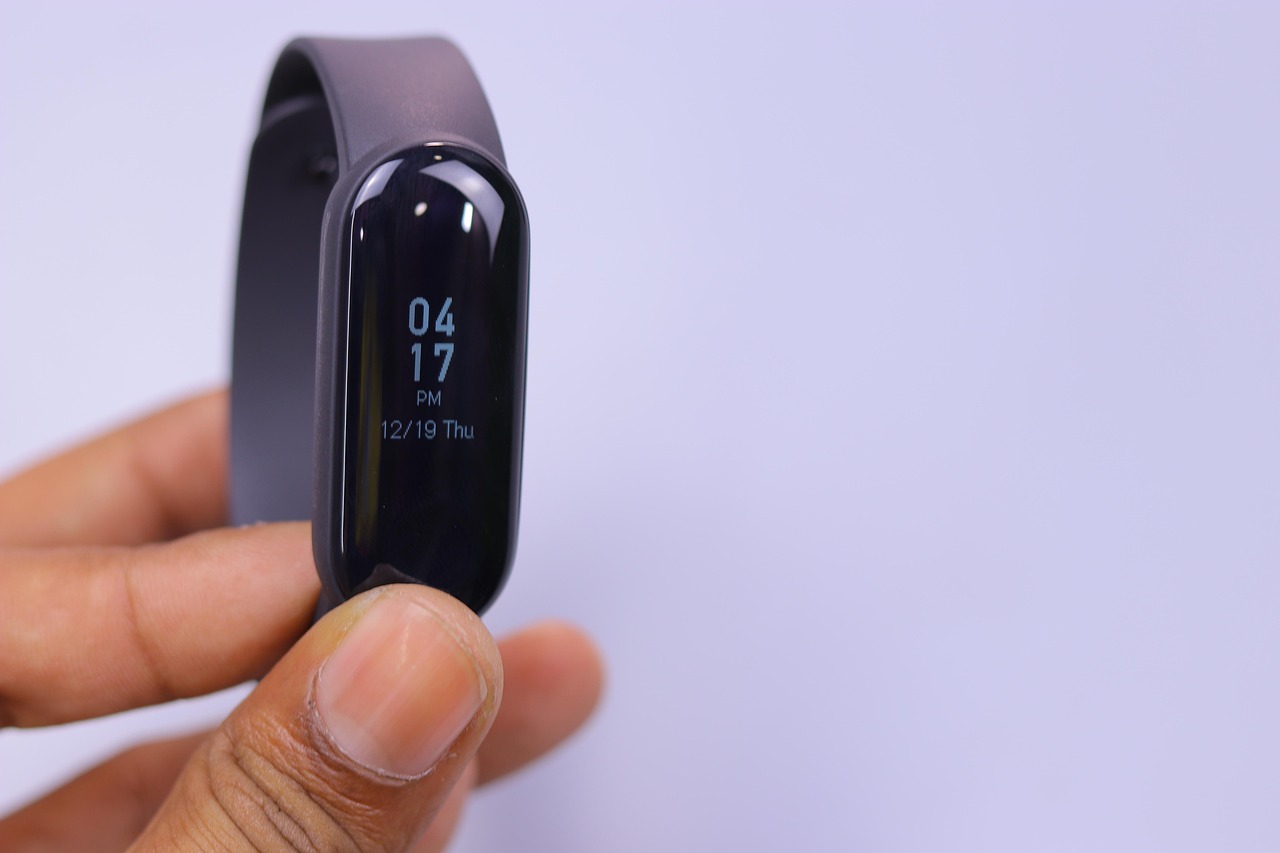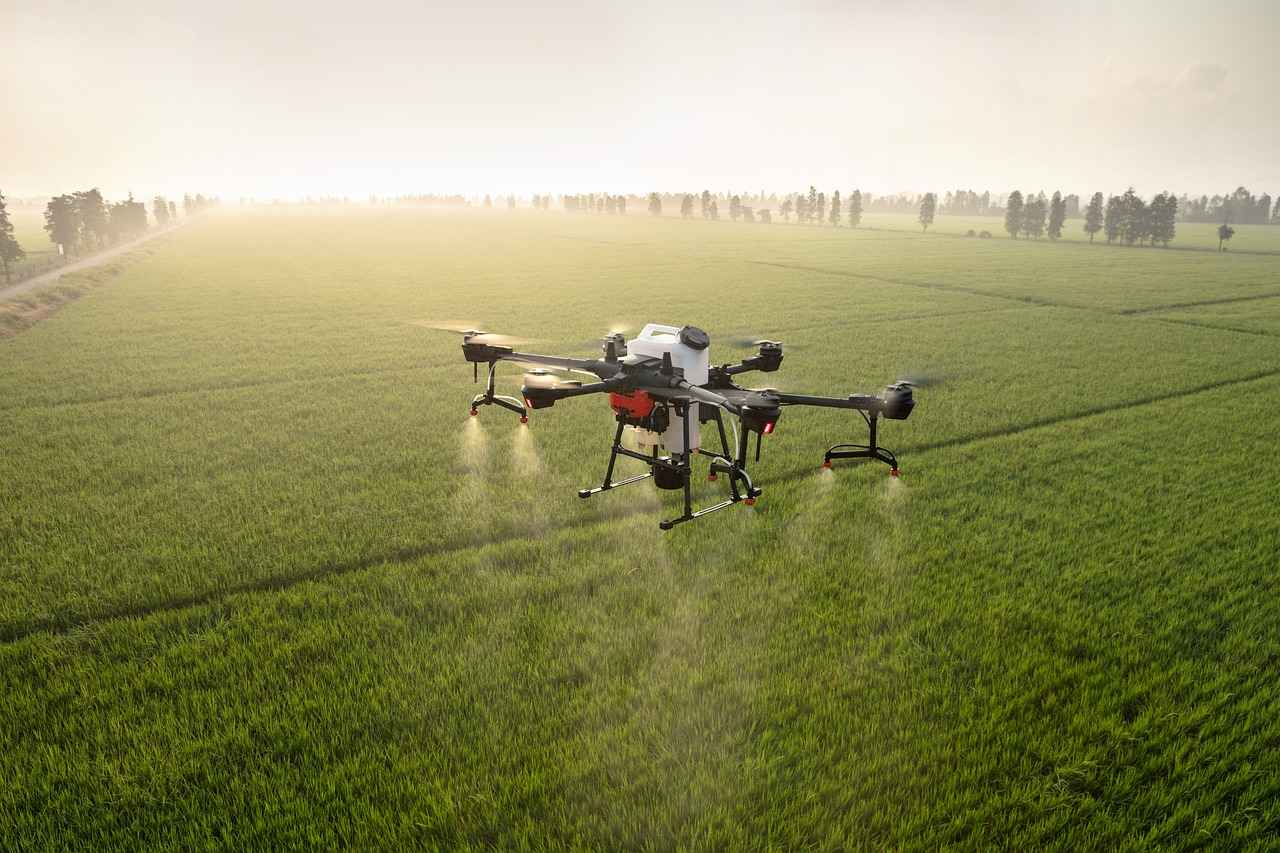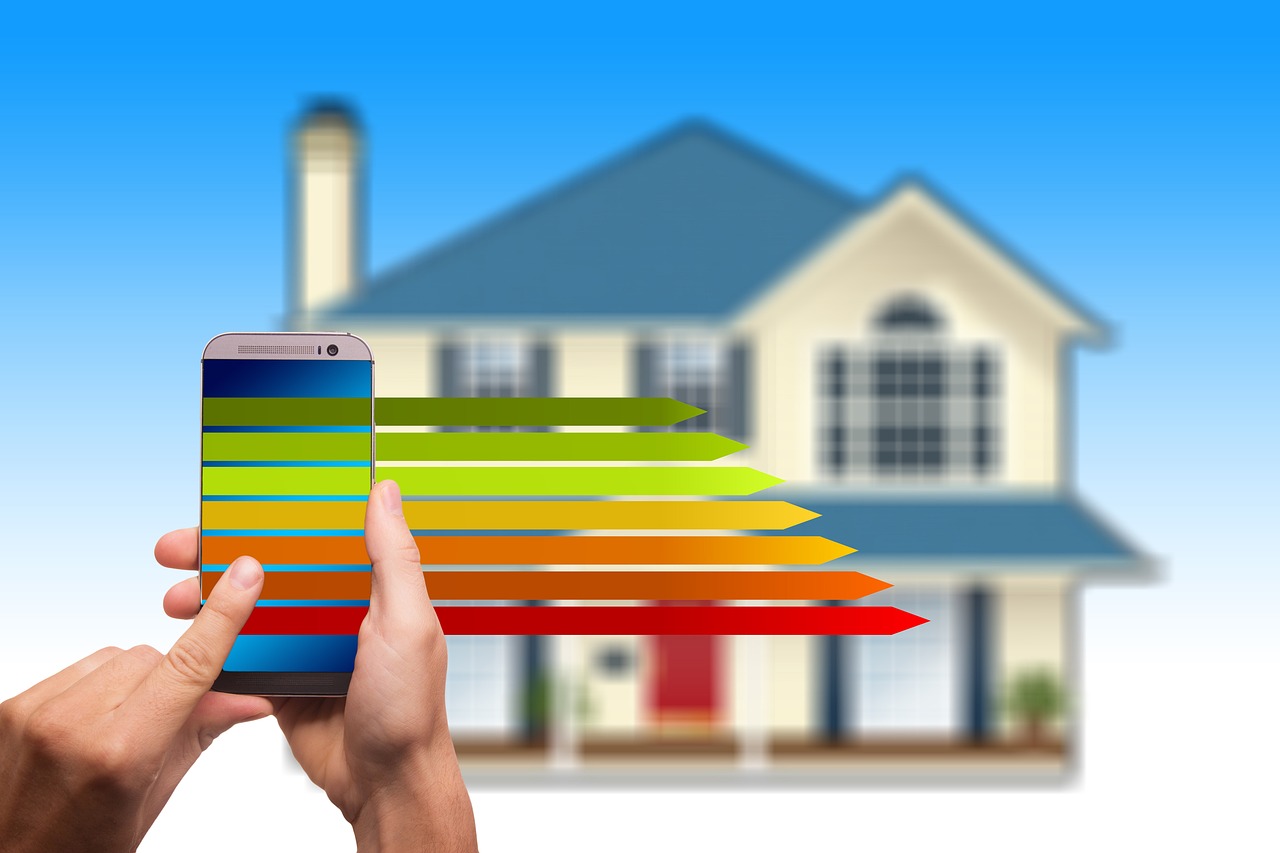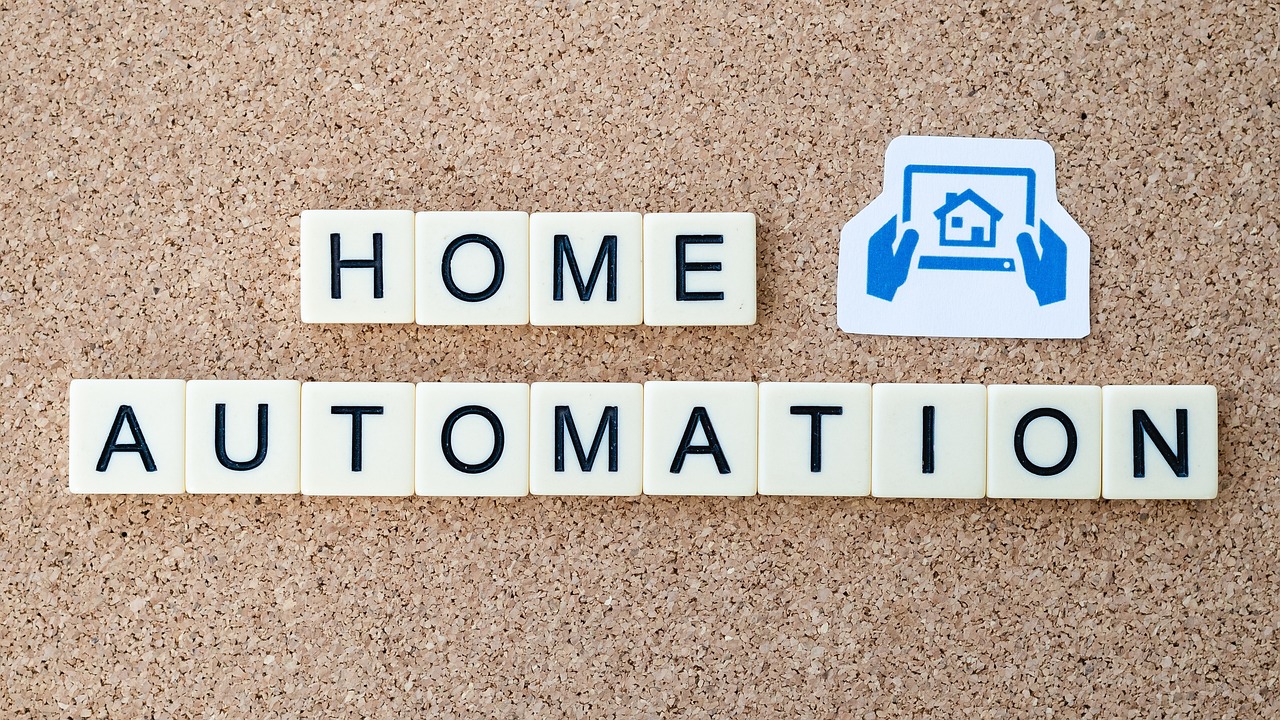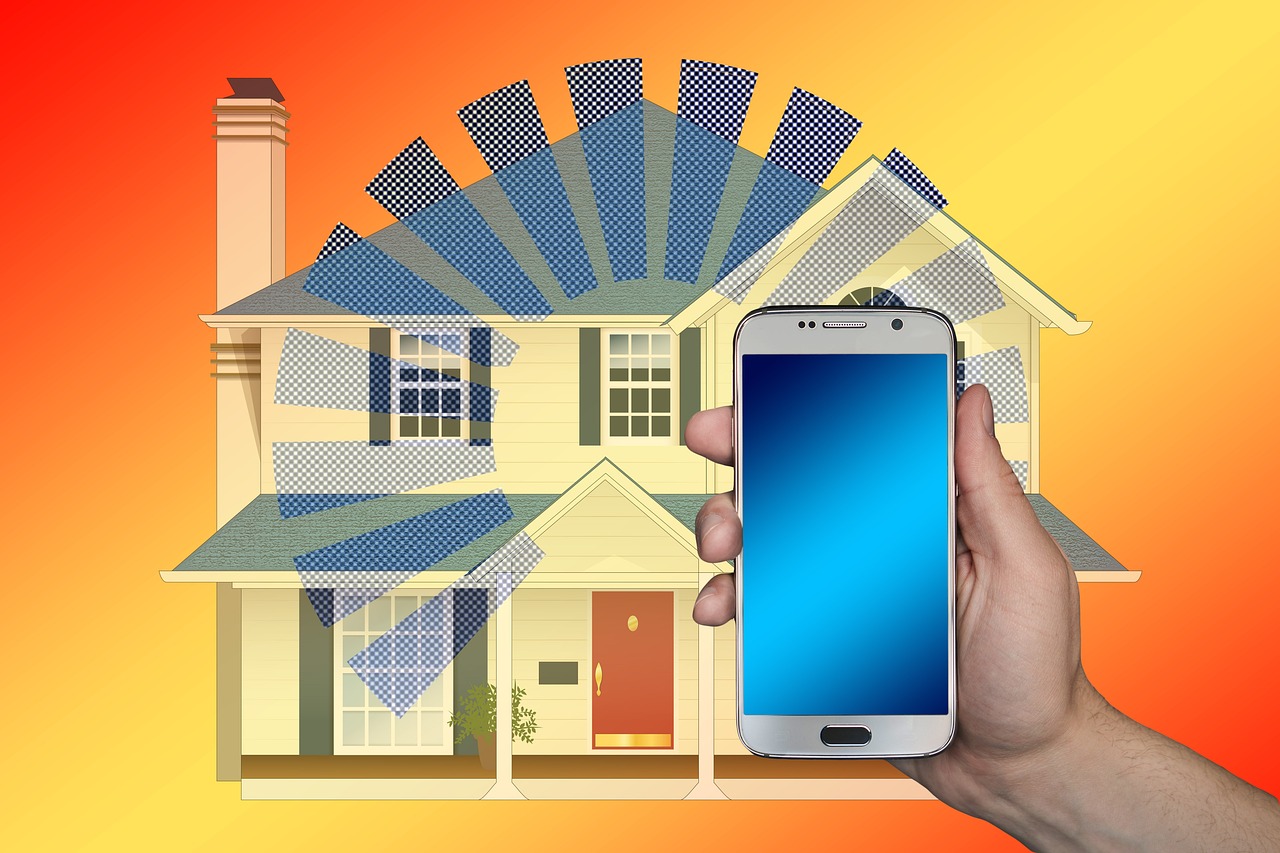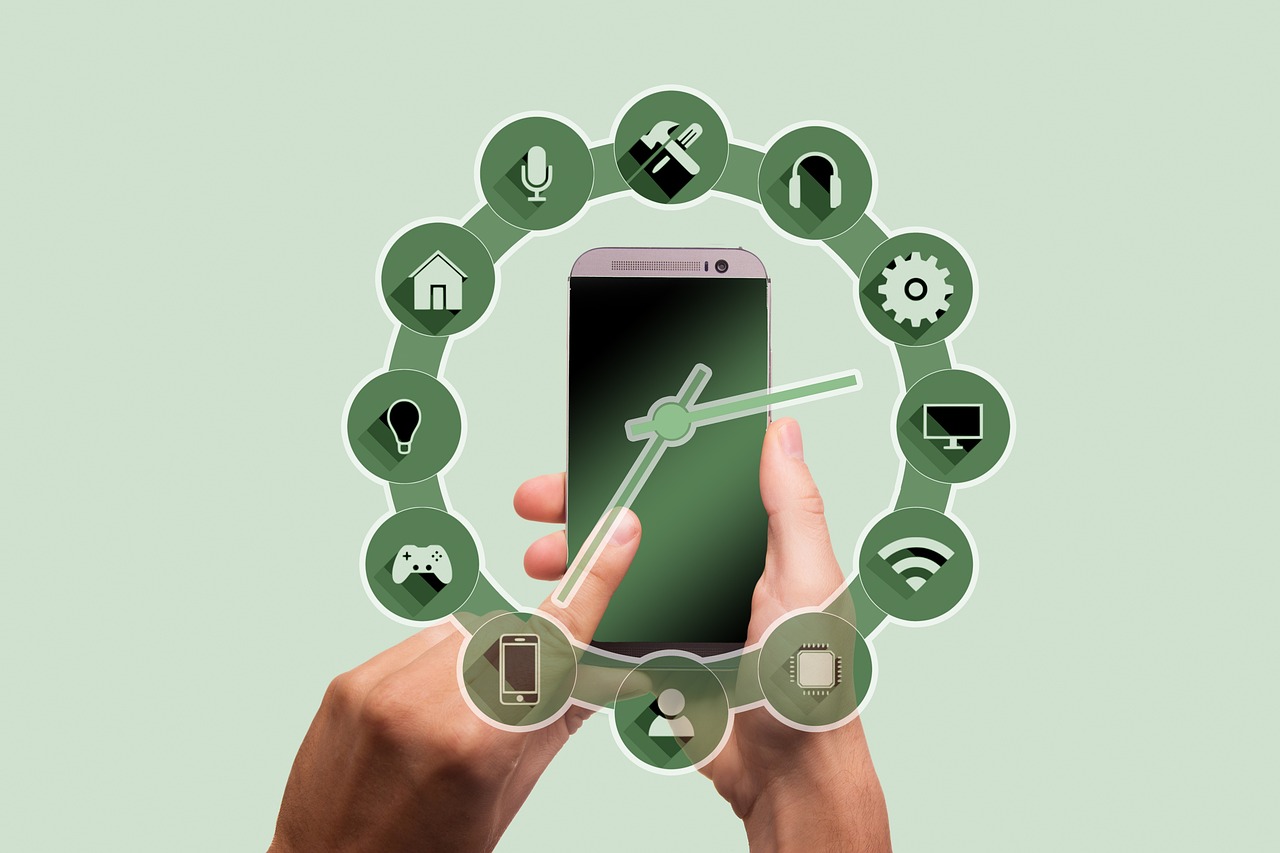This article delves into a variety of smart home devices specifically designed to enhance energy efficiency, reduce utility bills, and improve overall convenience. By integrating these technologies into your home, you can experience significant savings on your household expenses while enjoying a more comfortable living environment.
1. Smart Thermostats
Smart thermostats are revolutionizing how we manage our home climates. By learning your daily routines and preferences, they automatically adjust heating and cooling settings. This level of customization can lead to substantial savings on energy bills, especially in regions with extreme temperatures.
2. Energy Monitoring Systems
These systems provide real-time data on your energy consumption, allowing you to identify patterns and adjust usage accordingly. By understanding where your energy is going, you can make informed decisions that lead to lower costs and reduced waste.
- Real-Time Alerts: Get notified when energy usage spikes, enabling immediate action.
- Historical Data Analysis: Review past consumption trends to develop better energy management strategies.
3. Smart Lighting Solutions
With smart lighting, you can control your home’s lights remotely, set schedules, and even utilize motion sensors. This not only enhances convenience but also significantly reduces electricity usage, resulting in lower bills.
4. Smart Plugs and Power Strips
Smart plugs allow you to manage devices remotely, schedule their operation, and monitor energy consumption. By eliminating phantom energy use, you can further cut down on unnecessary costs.
5. Smart Appliances
Investing in smart appliances, such as energy-efficient refrigerators and washing machines, can lead to long-term savings. These devices optimize their performance to use less energy without sacrificing functionality.
Conclusion: Maximizing Savings with Smart Home Devices
In conclusion, integrating smart home devices into your household can lead to significant energy savings and reduced bills. By selecting the right technologies and utilizing them effectively, homeowners can enjoy both enhanced comfort and efficiency.
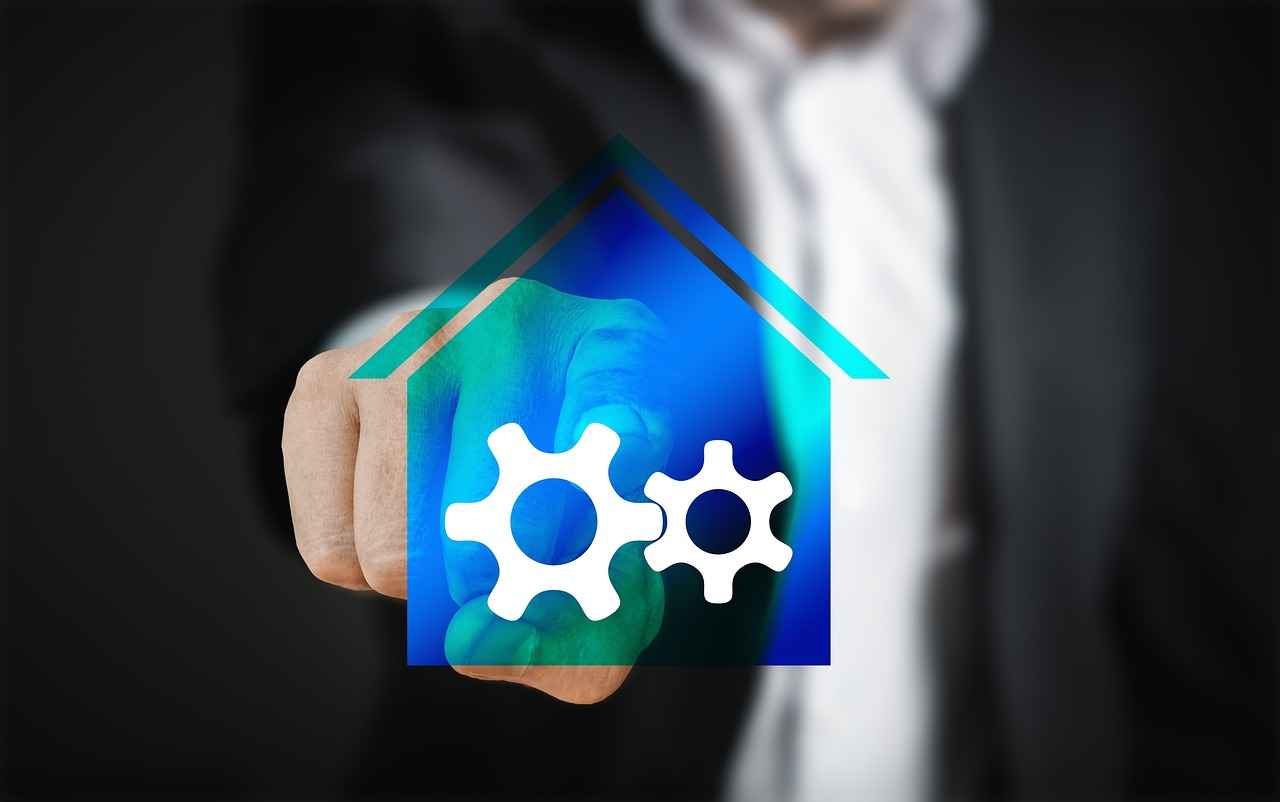
1. Smart Thermostats
In today’s world, where energy efficiency is paramount, smart thermostats have emerged as a revolutionary solution for homeowners. These innovative devices not only adjust your home’s temperature based on your daily habits but also provide a range of features that contribute to significant energy savings.
Smart thermostats utilize advanced algorithms and machine learning to analyze your heating and cooling preferences. By learning your schedule and adjusting accordingly, they ensure that your home is always at a comfortable temperature when you need it, while avoiding unnecessary energy consumption when you’re away. This capability leads to substantial savings on energy bills by optimizing usage patterns.
Moreover, many smart thermostats can be controlled remotely through smartphone apps, allowing you to make adjustments from anywhere. For instance, if you forgot to turn down the heat before leaving for vacation, you can easily do so with just a few taps on your phone. This feature not only enhances convenience but also promotes energy efficiency.
Another significant benefit of smart thermostats is their ability to provide detailed energy usage reports. These reports can help you understand your consumption patterns and identify areas for improvement. By being more aware of your energy use, you can make informed decisions that further reduce your bills.
Additionally, some smart thermostats are compatible with other smart home devices, such as energy monitors and smart lighting systems, creating a comprehensive energy management solution. This integration allows for synchronized control of multiple devices, maximizing overall energy efficiency.
In conclusion, investing in a smart thermostat is a wise choice for homeowners looking to save on energy costs while enhancing comfort. With their ability to learn your habits, provide remote access, and offer valuable insights into energy usage, smart thermostats are a key component of a modern, energy-efficient home.

2. Energy Monitoring Systems
Energy Monitoring Systems are essential tools for modern households aiming to optimize their energy consumption and reduce costs. These systems provide real-time tracking of energy usage, allowing homeowners to gain valuable insights into their consumption patterns. By understanding how and when energy is used, individuals can make informed decisions that lead to significant savings on their energy bills.
One of the primary advantages of energy monitoring systems is their ability to identify inefficiencies in energy use. For instance, users can pinpoint which appliances consume the most energy and adjust their usage accordingly. This not only helps in cutting down on unnecessary expenses but also promotes a more sustainable lifestyle by reducing overall energy waste.
- Real-Time Alerts: Many energy monitoring systems come equipped with alert features that notify users when their energy consumption exceeds a certain threshold. This allows for immediate action to be taken, such as turning off devices or adjusting settings.
- Historical Data Analysis: By analyzing past energy usage, homeowners can identify trends and develop more effective energy management strategies. This long-term perspective is crucial for making adjustments that lead to ongoing savings.
- User-Friendly Interfaces: Most modern systems offer intuitive apps that make it easy to monitor energy consumption from anywhere. This convenience encourages users to stay engaged with their energy usage.
When selecting an energy monitoring system, it is important to consider factors such as compatibility with existing home automation devices, ease of installation, and the specific features that will benefit your household the most. Some systems even integrate with smart home hubs, allowing for a comprehensive approach to energy management.
In conclusion, investing in an energy monitoring system is a proactive step towards achieving greater energy efficiency. By leveraging real-time data and insights, homeowners can not only reduce their energy bills but also contribute to a more sustainable future.
2.1 Benefits of Energy Monitoring
Understanding energy consumption is crucial for making informed decisions that can lead to significant savings and a reduction in waste. By utilizing energy monitoring systems, households can gain valuable insights into their energy usage patterns, enabling them to identify inefficiencies and implement effective strategies for improvement. These systems not only promote energy efficiency but also encourage responsible consumption in daily life.
| Key Benefits of Energy Monitoring | Description |
|---|---|
| Informed Decision-Making | Energy monitoring provides real-time data that helps homeowners understand their consumption habits, allowing for better management of energy use. |
| Cost Savings | By identifying high usage periods and energy-hungry devices, users can make adjustments that lead to lower energy bills. |
| Waste Reduction | Monitoring systems highlight areas of unnecessary consumption, helping users to eliminate waste and promote sustainability. |
| Enhanced Energy Efficiency | With insights into energy usage, households can adopt practices that improve overall efficiency, such as optimizing heating and cooling systems. |
- Real-Time Alerts: Many energy monitors send notifications when energy usage exceeds a certain threshold, allowing users to take immediate action.
- Historical Data Analysis: Reviewing past energy consumption can reveal trends and assist in developing more effective energy management strategies.
- Customizable Goals: Users can set specific energy-saving targets and track their progress over time, fostering a sense of achievement.
In conclusion, energy monitoring systems are invaluable tools for anyone looking to enhance their energy efficiency and reduce costs. By understanding and optimizing energy consumption, users can make a positive impact not only on their wallets but also on the environment.
2.1.1 Real-Time Alerts
Real-Time Alerts: A Game Changer for Energy Management
In an age where energy efficiency is paramount, real-time alerts provided by energy monitoring systems have become a crucial tool for homeowners. These alerts notify users instantly when their energy consumption spikes, enabling them to take immediate action to reduce usage. This proactive approach not only helps in managing energy costs but also promotes a more sustainable lifestyle.
When an alert is triggered, users can quickly identify which appliances or systems are consuming excessive energy. For instance, if your air conditioning unit is running longer than necessary, the alert will prompt you to check the settings or even adjust the thermostat to save energy. This immediate feedback loop encourages users to be more mindful of their energy consumption habits.
Moreover, many modern energy monitors come equipped with user-friendly mobile applications that allow for easy monitoring and control. These apps can provide detailed insights into energy usage patterns, helping you understand when and where you consume the most energy. By analyzing this data, you can make informed decisions that lead to significant savings on your energy bills.
In addition to financial savings, real-time alerts contribute to a broader goal of energy conservation. By reducing unnecessary energy use, households can decrease their carbon footprint, aligning with global efforts to combat climate change. The ability to respond to alerts swiftly fosters a culture of energy awareness, encouraging families to adopt more sustainable practices.
In conclusion, real-time alerts from energy monitoring systems are not just about saving money; they represent a shift towards smarter energy management. By leveraging technology, homeowners can take control of their energy consumption, leading to both financial and environmental benefits.
2.1.2 Historical Data Analysis
Analyzing historical energy usage is a crucial step in understanding patterns and behaviors that can lead to more effective energy management. By examining data over time, homeowners and businesses can identify trends that reveal how energy is consumed during different seasons, times of day, or operational activities. This analysis not only highlights periods of high consumption but also uncovers inefficiencies that can be addressed to optimize energy use.
One of the key benefits of historical data analysis is the ability to make informed decisions based on past performance. For instance, if data shows that energy usage spikes during certain hours, users can adjust their habits or invest in smart technology to automate energy-saving measures during these peak times. This proactive approach can significantly reduce energy costs over time.
Moreover, historical analysis can inform long-term energy management strategies. By understanding how energy consumption patterns have changed, organizations can set realistic goals for reducing energy use. This can lead to the implementation of renewable energy sources, energy-efficient appliances, or even changes in operational practices that prioritize sustainability.
In addition to cost savings, analyzing historical energy data can contribute to environmental benefits. By identifying opportunities to reduce energy consumption, businesses and homeowners can decrease their carbon footprint and contribute to a more sustainable future. This aligns with global efforts to combat climate change and promotes a culture of responsibility towards energy use.
In conclusion, leveraging historical energy usage data is not just about immediate savings; it is about creating a sustainable energy future. By making informed decisions and adopting strategic energy management practices, both individuals and organizations can achieve significant long-term benefits.
2.2 Choosing the Right System
Choosing the Right Energy Monitoring System is a pivotal step in optimizing your home’s energy consumption and reducing unnecessary costs. With the growing variety of options available, it’s essential to take a methodical approach to select a system that aligns with your specific needs.
- Compatibility: Ensure that the energy monitoring system you choose is compatible with your existing smart home devices. This integration is crucial for seamless operation and enhanced functionality.
- Ease of Use: Look for a system that offers a user-friendly interface. A complex setup can lead to frustration and may deter you from utilizing its full potential.
- Features: Different systems come with varying features, such as real-time monitoring, historical data analysis, and customizable alerts. Assess which features are most beneficial for your household.
- Cost: Consider both the initial investment and any ongoing subscription fees. A more expensive system may offer advanced features that could lead to greater savings in the long run.
- Reviews and Recommendations: Research user reviews and expert recommendations to gauge the reliability and performance of the systems you are considering.
When evaluating options, it can be helpful to create a comparison table to visualize the differences between systems. This can assist in making an informed decision:
| System | Compatibility | Ease of Use | Key Features | Price |
|---|---|---|---|---|
| System A | High | Easy | Real-time alerts, historical data | $99 |
| System B | Medium | Moderate | Customizable settings, app support | $129 |
| System C | High | Very Easy | Advanced analytics, voice control | $149 |
In conclusion, selecting the right energy monitoring system involves careful consideration of various factors. By focusing on compatibility, ease of use, features, and cost, you can make a choice that not only fits your lifestyle but also promotes energy efficiency and savings in your home.

3. Smart Lighting Solutions
Smart Lighting Solutions have revolutionized the way we illuminate our homes, offering not only convenience but also significant energy savings. These innovative systems allow users to control their lights remotely, set schedules for when lights should turn on and off, and utilize sensors that automatically adjust lighting based on occupancy and natural light availability. This results in a remarkable reduction in energy waste, which can lead to lower electricity bills.
One of the most compelling reasons to invest in smart lighting is the potential for energy efficiency. By using motion sensors, smart lights can turn off automatically when a room is unoccupied, ensuring that no energy is wasted. Additionally, users can program their lights to dim or brighten based on the time of day or specific activities, further optimizing energy use.
Smart lighting systems can be controlled via smartphone apps or voice assistants, making it easy to adjust settings from anywhere in the home or even while away. This level of customization allows homeowners to create the perfect ambiance for any occasion, whether it’s a cozy movie night or a bright workspace during the day.
- Philips Hue: Known for its wide range of color options and compatibility with various smart home systems.
- LIFX: Offers bright, vibrant colors without needing a hub, making it easy to set up.
- Wyze: A budget-friendly option that provides essential smart lighting features at an affordable price.
Installing smart lighting is often a straightforward process. Most systems can be set up using existing fixtures and require minimal tools. Users can simply replace their traditional bulbs with smart ones and connect them to their home Wi-Fi network through an app. For more complex systems, professional installation may be recommended.
In summary, smart lighting solutions not only enhance the aesthetic and functionality of your home but also contribute to substantial energy savings. By leveraging technology, homeowners can enjoy greater control over their lighting, leading to reduced energy consumption and lower utility bills.
3.1 Benefits of Smart Lighting
Smart lighting solutions have revolutionized the way we interact with our homes, offering not just energy savings but also enhanced convenience and security. With the ability to customize lighting based on personal preferences and daily routines, users can create a tailored environment that fits their lifestyle.
One of the primary benefits of smart lighting is its ability to reduce energy consumption. Traditional lighting systems often remain on longer than necessary, leading to increased electricity bills. Smart lighting, however, allows users to control their lights remotely or set schedules, ensuring that lights are only on when needed. For instance, you can program your lights to turn off automatically during the day when natural light is sufficient.
Moreover, smart lighting systems often incorporate motion sensors. These sensors detect movement in a room and can automatically turn lights on or off, further minimizing energy waste. This feature not only saves money but also enhances the security of your home. When you are away, you can set your lights to mimic your presence, deterring potential intruders.
Another significant advantage is the customizability of smart lighting. Users can adjust brightness and color settings to create the desired atmosphere for different occasions, whether it’s a cozy movie night or a vibrant gathering. This level of control enhances the overall living experience, making it more enjoyable and suited to individual preferences.
In summary, the benefits of smart lighting extend beyond energy savings. By integrating smart lighting into your home, you can enjoy a more convenient and secure living environment while also contributing to energy efficiency. Embracing this technology not only simplifies your daily routines but also supports a more sustainable lifestyle.
3.2 Popular Smart Lighting Brands
In the ever-evolving world of smart home technology, smart lighting has emerged as a key player, providing not only convenience but also energy efficiency. With numerous brands competing for attention, it can be challenging to identify the best options for your home. Below, we explore some of the most popular brands in the smart lighting market, highlighting their unique features and offerings.
| Brand | Key Features | Compatibility |
|---|---|---|
| Philips Hue | Wide range of bulbs, customizable colors, and integration with various smart home systems. | Compatible with Alexa, Google Assistant, and Apple HomeKit. |
| LIFX | No hub required, vibrant color options, and excellent app control. | Works with Alexa, Google Assistant, and IFTTT. |
| Wyze | Affordable pricing, easy setup, and voice control capabilities. | Compatible with Alexa and Google Assistant. |
| Sengled | Smart bulbs with built-in motion sensors and affordable starter kits. | Works with Alexa and Google Assistant. |
When selecting a smart lighting brand, consider factors such as compatibility with your existing smart home devices, the variety of available products, and user reviews. Researching these brands can help you find the best fit for your home, ensuring you enjoy both functionality and energy savings.
In conclusion, the smart lighting market offers a plethora of options designed to enhance your living space. By exploring popular brands like Philips Hue, LIFX, Wyze, and Sengled, you can make informed decisions that align with your preferences and lifestyle.

4. Smart Plugs and Power Strips
Smart Plugs and Power Strips are revolutionizing the way we manage energy consumption in our homes. These devices not only allow users to control their appliances remotely but also provide an opportunity to schedule usage and monitor energy consumption effectively. By integrating smart plugs and power strips into your daily routine, you can significantly reduce your energy bills and minimize your carbon footprint.
Smart plugs are compact devices that fit into standard electrical outlets, enabling users to control connected devices through a smartphone app or voice commands. This capability allows for remote management of devices, which means you can turn off appliances from anywhere, eliminating the risk of leaving devices on unnecessarily.
Unlike traditional power strips, smart power strips come equipped with advanced features such as:
- Energy Monitoring: Track energy consumption of connected devices in real-time.
- Scheduling: Set specific times for devices to turn on or off, ensuring they operate only when needed.
- Phantom Load Reduction: Automatically cut power to devices in standby mode, which can account for up to 10% of your energy bill.
For maximum savings, consider using smart plugs with high-energy devices like entertainment systems, computers, and kitchen appliances. By scheduling these devices to power down during off-peak hours or when not in use, you can effectively reduce unnecessary energy consumption.
Incorporating smart plugs and power strips into your household not only enhances convenience but also promotes energy efficiency. By taking control of your energy usage, you can enjoy lower bills while contributing to a more sustainable environment. Investing in these smart technologies is a step towards a more efficient and eco-friendly home.
4.1 How Smart Plugs Work
Smart plugs have revolutionized the way we manage our home energy consumption. These innovative devices connect to your home Wi-Fi network and allow you to control various appliances remotely through a smartphone app. This capability not only enhances convenience but also plays a significant role in optimizing energy use throughout your household.
When you plug an appliance into a smart plug, you gain the ability to turn it on or off from anywhere, as long as you have internet access. This feature is particularly useful for devices that tend to consume energy even when not in active use, commonly referred to as phantom loads. By scheduling these devices to turn off during hours when they are not needed, you can significantly reduce your energy bills.
Furthermore, many smart plugs come equipped with energy monitoring capabilities. This means you can track the energy consumption of individual devices in real-time. Understanding which appliances use the most energy allows you to make informed decisions about your usage patterns and identify opportunities for savings.
To maximize the benefits of smart plugs, consider the following best practices:
- Target Energy-Hungry Devices: Use smart plugs with high-energy appliances like televisions, gaming consoles, and kitchen gadgets to minimize standby power consumption.
- Set Schedules: Program your smart plugs to turn off devices during peak hours or when you are not home, ensuring that energy is not wasted.
- Utilize Energy Monitoring: Regularly check the energy usage data provided by your smart plugs to adjust your habits and further reduce costs.
In conclusion, smart plugs are an essential addition to any smart home setup. They provide a simple yet effective way to manage energy consumption, enhance convenience, and ultimately save money on your energy bills. By integrating these devices into your daily routine, you can contribute to a more energy-efficient household.
4.2 Best Practices for Usage
Best Practices for Using Smart Plugs Effectively
Smart plugs are a fantastic addition to any modern home, allowing you to control your devices remotely and monitor energy usage. To truly maximize savings and enhance efficiency, it’s crucial to implement best practices when using these devices. Below are some essential strategies to consider:
- Identify Energy-Hungry Devices: Focus on connecting devices that consume a lot of energy, such as entertainment systems, kitchen appliances, and heating equipment. These devices often draw power even when they are turned off, known as standby power consumption.
- Utilize Scheduling Features: Take advantage of the scheduling capabilities of smart plugs. Set them to turn off devices during hours when they are not in use, such as overnight or while you are at work. This simple action can lead to substantial energy savings.
- Monitor Usage Patterns: Use the energy monitoring features available on many smart plugs. By tracking the energy consumption of connected devices, you can identify which items are using the most power and adjust your habits accordingly.
- Group Similar Devices: For convenience, group similar devices together on a single smart plug or power strip. For example, connect your TV, gaming console, and streaming devices to one smart plug. This way, you can turn them all off with a single command, reducing standby power.
- Regularly Review and Adjust: Periodically review your smart plug usage and adjust settings as needed. As your needs change, so should your energy management strategies.
By following these best practices, you can significantly reduce your energy bills while enjoying the convenience of smart home technology. Implementing smart plugs effectively not only conserves energy but also promotes a more sustainable lifestyle.

5. Smart Appliances
Smart appliances are revolutionizing the way we manage our households. These innovative devices, including refrigerators, washing machines, and ovens, utilize advanced technology to enhance performance and improve energy efficiency. By integrating smart features, these appliances not only make daily tasks easier but also help in significantly reducing energy bills.
One of the key benefits of smart appliances is their ability to optimize energy consumption. For instance, many modern refrigerators come equipped with sensors that monitor usage patterns and adjust cooling levels accordingly. This means that when the refrigerator is not frequently accessed, it can reduce its energy usage, leading to lower electricity costs.
Washing machines have also seen significant advancements. Many models offer eco-friendly cycles that use less water and energy while still delivering a thorough clean. These machines can be programmed to operate during off-peak hours, when electricity rates are lower, further enhancing savings.
Moreover, smart appliances often feature connectivity options, allowing users to control them remotely via smartphone apps. This capability enables homeowners to monitor and adjust settings from anywhere, ensuring that they are not wasting energy when not at home. For example, if you forget to turn off your oven, you can easily do so from your phone.
In terms of investment, while the initial cost of smart appliances may be higher than traditional models, the long-term savings on energy bills can be substantial. Many users find that the return on investment is realized within a few years, making these devices a wise choice for energy-conscious consumers.
In conclusion, smart appliances are more than just trendy gadgets; they are essential tools for modern living. By incorporating these devices into your home, you can enjoy enhanced convenience and significant savings on your energy bills.
5.1 Energy-Efficient Features
In today’s world, energy efficiency has become a crucial consideration for many homeowners, especially when it comes to smart appliances. These devices are designed not only to enhance convenience but also to significantly reduce energy consumption. Let’s explore some of the key energy-efficient features that make smart appliances a wise investment for both your wallet and the environment.
- Adaptive Energy Settings: Many smart appliances are equipped with adaptive energy settings that automatically adjust their operation based on usage patterns. For instance, a smart refrigerator can modify its cooling intensity during off-peak hours, leading to substantial energy savings.
- Scheduling Capabilities: Smart appliances often come with scheduling features that allow users to set specific times for operation. For example, a smart washing machine can be programmed to run during the night when energy rates are lower, maximizing savings.
- Real-Time Monitoring: Devices such as smart ovens and dishwashers provide real-time monitoring of energy consumption. This allows users to track their usage and adjust their habits accordingly, promoting a more sustainable lifestyle.
- Eco-Friendly Modes: Many smart appliances feature dedicated eco modes that optimize performance while minimizing energy usage. This includes using less water in dishwashers or lower temperatures in washing machines without compromising cleanliness.
- Integration with Smart Home Systems: Smart appliances can seamlessly integrate with home automation systems, allowing for coordinated energy-saving strategies. For example, when you leave home, your smart thermostat can adjust the temperature while your smart lights turn off, collectively reducing energy consumption.
By incorporating these energy-efficient features, smart appliances not only help in reducing your energy bills but also contribute to a more sustainable future. As technology continues to advance, the potential for further innovations in energy efficiency remains promising.
5.2 Investment vs. Savings
Investing in smart appliances can initially seem daunting due to their higher upfront costs. However, these modern devices are engineered to provide substantial savings over time, making them a wise choice for homeowners looking to reduce their energy bills. By leveraging advanced technology, smart appliances optimize energy consumption, which can lead to significant reductions in utility expenses.
One of the primary advantages of smart appliances is their ability to monitor and adjust their energy use automatically. For instance, a smart refrigerator can maintain optimal temperatures while minimizing energy waste. Similarly, smart washing machines can determine the size of the load and adjust water and energy usage accordingly. This level of efficiency not only helps in conserving energy but also translates into lower monthly bills.
Moreover, many smart appliances come equipped with features that allow users to track their energy consumption in real-time. This capability enables homeowners to identify patterns and make informed decisions about their energy use. By understanding when and how much energy is being consumed, users can adjust their habits to further enhance savings.
In addition to energy savings, smart appliances often have longer lifespans compared to their traditional counterparts. Although the initial investment may be higher, the durability and efficiency of these devices can lead to lower replacement costs in the long run. Furthermore, many utility companies offer rebates for purchasing energy-efficient appliances, which can help offset the initial costs.
In conclusion, while the upfront investment in smart appliances may be higher, the long-term savings on energy bills and the benefits of enhanced efficiency make them a valuable addition to any home. As energy prices continue to rise, the decision to invest in smart technology becomes increasingly prudent, promising both financial and environmental benefits.
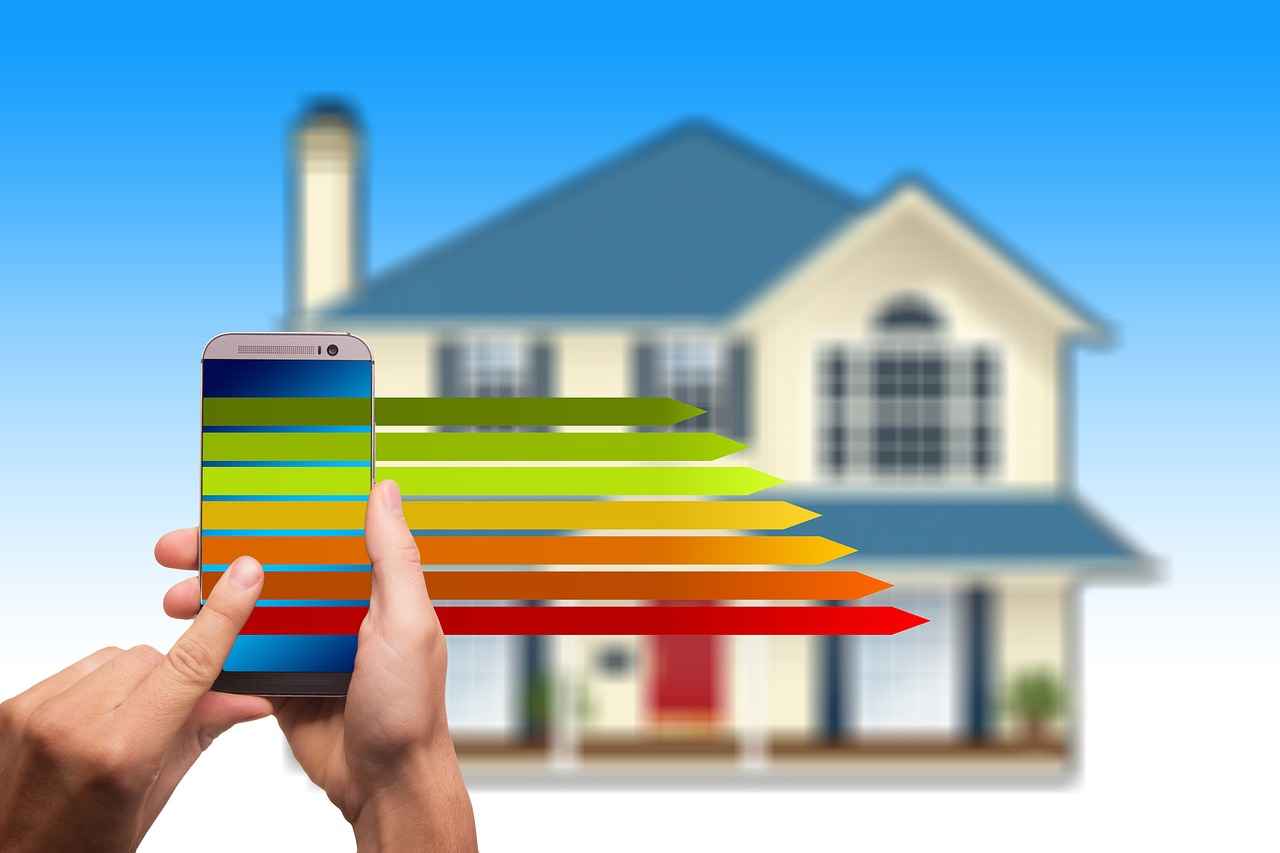
6. Smart Home Hubs
Smart Home Hubs play a pivotal role in modernizing our living spaces, integrating various smart devices to create a cohesive ecosystem. These hubs enable seamless control and automation, enhancing energy efficiency across your home. By centralizing the management of devices such as lights, thermostats, and security systems, smart home hubs can significantly reduce energy consumption and lower utility bills.
When you connect your devices to a smart home hub, you can automate routines that optimize energy use. For instance, you can schedule your heating to lower when you leave for work and raise again before you return, ensuring comfort without unnecessary energy expenditure. This automation not only saves money but also enhances convenience in daily life.
One of the primary advantages of using a smart home hub is the centralized control it offers. Instead of managing each device separately, you can control everything from a single app or interface. This streamlined approach allows for coordinated energy-saving efforts, maximizing overall efficiency. For example, you can set your lights to turn off when you leave the house, or adjust your thermostat based on real-time data from your energy monitoring system.
There are several popular smart home hubs available that cater to various needs and preferences. Some of the most recognized brands include:
- Amazon Echo Plus: Integrates with Alexa for voice control and supports a wide range of devices.
- Google Nest Hub: Features a touchscreen for easy control and integrates seamlessly with Google Assistant.
- Samsung SmartThings: Offers extensive compatibility with numerous devices and robust automation capabilities.
Choosing the right smart home hub is crucial for ensuring compatibility with your existing devices and maximizing energy savings. Researching features and user reviews can help you find the best fit for your home.
In conclusion, investing in a smart home hub can lead to improved energy efficiency and convenience. With the ability to automate and control multiple devices from a single platform, homeowners can enjoy a more comfortable living environment while also reducing their energy bills.
6.1 Centralized Control Benefits
Centralized control of smart devices offers numerous advantages that enhance the management and efficiency of your home. By integrating various smart technologies into a single platform, homeowners can streamline operations and improve energy conservation efforts. This approach not only simplifies the user experience but also maximizes overall efficiency.
One of the primary benefits of centralized control is the ability to coordinate energy-saving efforts. For instance, when smart thermostats, lighting systems, and appliances are interconnected, they can work in harmony to optimize energy use throughout the day. This coordination allows for automatic adjustments based on real-time data, such as occupancy levels and weather conditions, leading to significant reductions in energy consumption.
Moreover, having a centralized system enables users to monitor their energy usage more effectively. With a comprehensive overview of all connected devices, homeowners can easily identify which appliances consume the most energy and make informed decisions to reduce waste. This insight can lead to proactive measures, such as scheduling high-energy devices to run during off-peak hours, further enhancing energy efficiency.
Additionally, centralized control can improve the user experience. Instead of managing each device individually, homeowners can use a single app or interface to control all their smart devices. This not only saves time but also reduces the complexity of managing a smart home. Users can set up automation rules, such as turning off lights when leaving the house or adjusting the thermostat based on the time of day, ensuring that energy-saving practices become second nature.
In conclusion, centralizing control of smart devices is a powerful strategy for enhancing energy efficiency and simplifying home management. By coordinating efforts and providing valuable insights, homeowners can significantly reduce their energy bills while enjoying the convenience of a connected home.
6.2 Popular Smart Hubs
When it comes to creating a cohesive smart home ecosystem, selecting the right smart home hub is crucial. A smart hub acts as the central point of control for various smart devices, allowing them to communicate and function together seamlessly. Here, we will explore some of the most popular smart hubs available today, highlighting their features and compatibility to help you make an informed decision.
- Amazon Echo Plus
- Integrates with Alexa for voice control.
- Built-in Zigbee hub for connecting compatible devices.
- Supports a wide range of smart home devices from different brands.
- Google Nest Hub
- Utilizes Google Assistant for voice commands and automation.
- Compatible with a broad spectrum of smart devices, including lights and cameras.
- Offers a user-friendly touchscreen interface for easy control.
- Samsung SmartThings Hub
- Supports Zigbee, Z-Wave, and Wi-Fi devices.
- Allows extensive automation options through the SmartThings app.
- Highly customizable for different smart home setups.
- Apple HomePod Mini
- Utilizes Siri for voice control and automation.
- Integrates seamlessly with HomeKit-enabled devices.
- Offers a secure and privacy-focused smart home experience.
Choosing the right smart hub depends on several factors, including device compatibility, user interface preferences, and specific features you may need. Researching these popular options can ensure that you select a hub that fits well within your existing smart home ecosystem, enhancing both functionality and energy efficiency.
In conclusion, a well-chosen smart hub not only simplifies the management of your smart devices but also promotes a more energy-efficient home environment. By investing time in understanding the available options, you can create a harmonious and efficient smart home setup.

7. Smart Blinds and Curtains
In the realm of smart home technology, smart blinds and curtains stand out as innovative solutions that enhance both comfort and energy efficiency. These automated window treatments can adjust themselves based on environmental factors such as sunlight and temperature, ensuring that your indoor conditions remain pleasant while simultaneously reducing energy consumption.
Smart blinds can be programmed to open or close at specific times of the day or in response to real-time data from light sensors. For instance, during peak sunlight hours, they can automatically close to block excessive heat, thereby minimizing the need for air conditioning. Conversely, they can open during cooler parts of the day to let in natural light and warmth, reducing heating costs.
| Benefits of Smart Blinds and Curtains | Description |
|---|---|
| Energy Efficiency | By regulating indoor temperatures, smart blinds help in lowering energy bills. |
| Convenience | Automated controls allow for effortless adjustments without manual intervention. |
| Privacy Control | Easily manage privacy levels with the touch of a button or via smartphone. |
| Enhanced Comfort | Maintain optimal lighting and temperature for a comfortable living space. |
Installation of smart blinds is straightforward but requires careful planning to ensure optimal performance. It is essential to choose the right type of smart blinds that fit your windows and meet your specific needs. Regular maintenance, such as cleaning the sensors and ensuring the mechanisms are functioning correctly, will maximize their lifespan and efficiency.
In conclusion, investing in smart blinds and curtains not only adds a modern touch to your home but also offers significant energy savings and enhanced comfort. As technology advances, these smart solutions will continue to play a vital role in the evolution of energy-efficient homes.
7.1 Benefits of Smart Window Treatments
Smart window treatments, such as smart blinds and curtains, are becoming increasingly popular in modern homes. Their ability to optimize light and temperature not only enhances comfort but also plays a significant role in energy efficiency. Here are some key benefits of incorporating smart window treatments into your home:
- Energy Savings: By effectively managing natural light, smart blinds can reduce the need for artificial lighting during the day. This leads to lower electricity consumption and, consequently, reduced energy bills.
- Temperature Regulation: Smart blinds can automatically adjust based on external weather conditions. For instance, they can close during peak sunlight hours in summer to keep your home cool, reducing the reliance on air conditioning.
- Improved Insulation: During colder months, smart blinds can help retain heat by providing an additional layer of insulation. This minimizes heating costs by preventing warm air from escaping.
- Convenience and Automation: Many smart blinds can be programmed or controlled via smartphone apps, allowing homeowners to adjust them remotely. This feature enhances convenience and allows for personalized settings based on daily routines.
- Enhanced Privacy: Smart window treatments offer the ability to control visibility into your home. You can easily adjust them to maintain privacy without sacrificing natural light.
- Integration with Smart Home Systems: These treatments can seamlessly integrate with other smart home devices, allowing for coordinated automation. For example, they can be set to close when the security system is activated.
In conclusion, investing in smart window treatments not only contributes to a more comfortable living environment but also leads to significant energy savings. By optimizing natural light and insulation, these innovative solutions help reduce heating and cooling costs, ultimately resulting in lower energy bills for homeowners.
7.2 Installation and Maintenance
Proper installation and maintenance of smart window treatments are essential for maximizing their energy-saving potential and ensuring long-term performance. These advanced systems not only enhance the aesthetics of your home but also contribute significantly to energy efficiency. Here’s a comprehensive guide on how to achieve optimal results with your smart window treatments.
Installation Tips:
- Choose the Right Location: Ensure that sensors are positioned to effectively detect sunlight and temperature changes. This helps in automatic adjustments.
- Follow Manufacturer Instructions: Every smart window treatment comes with specific installation guidelines. Adhering to these instructions ensures proper functionality.
- Use Professional Help: If you’re unsure about the installation process, consider hiring a professional to avoid potential issues that could arise from improper setup.
Maintenance Guidelines:
- Regular Cleaning: Dust and clean your smart blinds or curtains regularly to maintain their appearance and functionality. Use a soft cloth or a vacuum with a brush attachment.
- Check for Software Updates: Like any smart device, window treatments may require firmware updates to enhance performance and security. Regularly check the manufacturer’s website or app for updates.
- Inspect Mechanical Components: Periodically check the tracks and mechanisms for any signs of wear or damage. Addressing these issues early can prevent costly repairs.
By investing time in proper installation and maintenance, you can ensure that your smart window treatments operate at peak efficiency. This not only maximizes energy savings but also extends the lifespan of the products, providing long-term benefits for your home.
In conclusion, the integration of smart window treatments into your home can lead to significant energy savings when installed and maintained correctly. By following the guidelines outlined above, you can enjoy a comfortable living environment while contributing to energy conservation.

8. Smart Irrigation Systems
Smart Irrigation Systems are revolutionizing the way we manage water resources in our gardens and lawns. These advanced technologies not only enhance plant health but also play a significant role in conserving water and energy.
By utilizing real-time weather data and soil moisture sensors, smart irrigation systems can efficiently schedule watering times and durations. This ensures that plants receive the right amount of water at the right time, minimizing waste. The result is a well-maintained landscape that thrives without over-reliance on water resources.
One of the primary advantages of smart irrigation systems is their ability to conserve water. Traditional irrigation methods often lead to overwatering, which not only wastes water but also increases the demand for energy-intensive water pumps. In contrast, smart systems adapt to changing weather conditions, adjusting watering schedules accordingly. For instance, if rain is forecasted, the system can delay irrigation, thus conserving both water and energy.
Selecting the appropriate smart irrigation system requires careful consideration of several factors:
- Garden Size: Larger areas may require more advanced systems with multiple zones.
- Plant Types: Different plants have varying water needs; ensure the system can accommodate these differences.
- Local Climate: Understanding your local climate will help in selecting a system that can effectively manage water usage.
Investing in smart irrigation technology can lead to substantial cost savings over time. By reducing water consumption, homeowners can expect lower utility bills. Additionally, the decrease in energy usage for pumping water contributes to overall energy savings, making these systems not only environmentally friendly but also economically beneficial.
In conclusion, smart irrigation systems are an essential tool for homeowners looking to enhance their garden’s efficiency while conserving vital resources. By making informed choices and utilizing the latest technology, we can create sustainable landscapes that benefit both our wallets and the environment.
8.1 Water Conservation Benefits
Water conservation is an essential practice in today’s world, where sustainable living is becoming increasingly important. Smart irrigation systems play a crucial role in this effort by optimizing water usage in gardens and lawns. These systems not only contribute to environmental sustainability but also help homeowners save on water bills.
One of the key benefits of smart irrigation systems is their ability to automatically adjust watering schedules based on real-time weather data. This means that during rainy days, the system can delay or skip watering, preventing water waste. Conversely, during dry spells, it can increase watering to ensure that plants receive adequate hydration. This adaptability leads to efficient water use and promotes healthier plant growth.
In addition to responding to weather conditions, smart irrigation systems can also monitor soil moisture levels. This feature ensures that plants are watered only when necessary, reducing the frequency of watering sessions. By maintaining optimal soil moisture, these systems help prevent overwatering, which can lead to root rot and other plant diseases.
Furthermore, many smart irrigation systems are equipped with advanced sensors and timers that can be programmed to water specific areas of a garden at different times. This targeted approach allows homeowners to focus on areas that require more water, such as flower beds or vegetable gardens, while conserving water in less critical areas.
As a result, implementing a smart irrigation system can lead to significant water savings, contributing to a more sustainable lifestyle. Homeowners not only benefit from reduced water bills but also play a part in protecting local water resources. In summary, smart irrigation systems are an effective solution for promoting water conservation, ensuring that every drop counts.
8.2 Choosing the Right System
Choosing the Right Smart Irrigation System is crucial for optimizing water usage in your garden or lawn. With various options available, it’s essential to consider multiple factors to ensure that the system meets your specific needs and promotes sustainability.
- Garden Size: The size of your garden is a primary consideration. Larger gardens may require more advanced systems with multiple zones, while smaller spaces might benefit from simpler setups.
- Plant Types: Different plants have varying water requirements. Assessing the types of plants in your garden will help you select a system that can cater to their specific needs.
- Local Climate Conditions: Understanding your local climate is vital. Systems that adjust watering schedules based on weather forecasts can significantly enhance water efficiency.
- Soil Type: The type of soil in your garden affects how quickly it absorbs water. Sandy soils drain faster, while clay soils retain moisture longer. Choose a system that accommodates these conditions.
- Budget: Smart irrigation systems come at various price points. Establishing a budget will help narrow down your options while ensuring you invest in a quality system.
- Connectivity Features: Many modern systems offer connectivity features, such as smartphone apps for remote control and monitoring. This can enhance convenience and allow for real-time adjustments.
In conclusion, selecting the right smart irrigation system involves a careful evaluation of your garden’s unique characteristics and your personal preferences. By considering garden size, plant types, local climate conditions, soil type, budget, and connectivity features, you can make an informed decision that promotes efficient water use and supports healthy plant growth.

9. Smart Energy Storage Solutions
Smart Energy Storage Solutions are revolutionizing the way homeowners manage their energy consumption. With the increasing adoption of renewable energy sources, such as solar and wind, the need for efficient energy storage has never been more critical. These solutions not only allow homeowners to store energy generated during peak production times but also enable them to use this stored energy when demand is high or when the grid is down.
One of the most popular forms of smart energy storage is the home battery system. These systems are designed to capture and store energy, making it available for use whenever needed. By investing in a home battery, homeowners can significantly reduce their reliance on the grid, which can lead to lower energy bills and increased energy independence.
- Cost Savings: Home batteries can store energy during off-peak hours when electricity rates are lower, allowing homeowners to use this energy during peak hours, thus reducing their overall energy costs.
- Renewable Energy Utilization: Homeowners with solar panels can store excess energy generated during sunny days for use at night or during cloudy days, maximizing their use of renewable energy.
- Backup Power: In the event of a power outage, home batteries can provide essential power, ensuring that critical appliances remain operational.
When considering smart energy storage solutions, it’s essential to evaluate various factors:
- Capacity: The total amount of energy the battery can store.- Efficiency: How effectively the battery can convert stored energy back into usable power.- Compatibility: Ensuring the battery system works seamlessly with existing solar panels and home energy systems.
In conclusion, smart energy storage solutions offer a viable path toward energy independence and cost savings. By harnessing the power of renewable energy and utilizing home batteries, homeowners can take control of their energy consumption while contributing to a more sustainable future.
9.1 Benefits of Energy Storage
Implementing smart energy storage solutions in your home can revolutionize the way you consume and manage energy. These systems allow homeowners to store energy generated during off-peak hours or from renewable sources such as solar panels. This practice not only leads to significant financial savings but also enhances the resilience of your energy supply.
- Cost Savings: By storing energy when prices are low, homeowners can use this energy during peak hours when electricity costs are higher. This strategy can lead to substantial savings on monthly energy bills.
- Backup Power: In the event of power outages, energy storage systems provide a reliable source of backup power. This feature ensures that essential appliances and devices remain operational, enhancing home safety and comfort.
- Environmental Impact: Utilizing stored energy from renewable sources reduces reliance on fossil fuels, contributing to a lower carbon footprint. This shift supports global efforts towards sustainability and environmental conservation.
- Energy Independence: Smart energy storage systems empower homeowners to become less dependent on the grid. By generating and storing their own energy, they can navigate fluctuations in energy prices and supply more effectively.
- Grid Stability: By reducing demand during peak hours, energy storage systems contribute to overall grid stability. This can help prevent outages and reduce the need for additional power plants.
In conclusion, investing in smart energy storage solutions offers numerous benefits that extend beyond mere cost savings. From providing backup power during outages to promoting environmental sustainability, these systems are an essential component of modern energy management.
9.2 Evaluating Storage Options
When it comes to energy storage solutions, making an informed choice is essential for maximizing efficiency and savings. Here are the key factors to consider:
- Capacity: This refers to the amount of energy that can be stored. It’s crucial to assess your household’s energy needs to ensure that the storage solution can handle your consumption patterns. A higher capacity allows for more energy to be stored, which can be particularly beneficial during peak usage times.
- Efficiency: The efficiency of an energy storage system indicates how well it can convert and store energy. Look for systems with high round-trip efficiency, meaning they lose minimal energy during storage and retrieval. This factor directly impacts your overall savings on energy costs.
- Compatibility: Ensure that the energy storage solution is compatible with your existing energy systems. This includes compatibility with solar panels, wind turbines, or other renewable energy sources. A seamless integration will enhance the system’s performance and reliability.
- Cost: Evaluate the total cost of ownership, including installation, maintenance, and potential savings on energy bills. While some systems may have a higher initial investment, they could lead to greater long-term savings.
- Scalability: Consider whether the storage solution can be easily expanded in the future. As your energy needs grow, having a scalable system can provide flexibility and adaptability.
By carefully considering these factors, homeowners can select an energy storage solution that not only meets their current needs but also aligns with future energy goals, ultimately leading to optimal savings and efficiency in energy consumption.

10. Smart Home Security Systems
Smart Home Security Systems play a crucial role in enhancing the safety of your home while also contributing to energy savings. These systems utilize advanced technology to monitor and automate various aspects of your home, making them an essential investment for modern homeowners.
One of the primary benefits of smart home security systems is their ability to provide real-time monitoring. Homeowners can receive instant alerts on their smartphones if unusual activity is detected, allowing for quick responses to potential threats. This proactive approach not only enhances safety but also discourages intruders, ultimately leading to a safer living environment.
In addition to security, these systems can significantly reduce energy consumption. For instance, many smart security devices come equipped with motion-activated lights that turn on only when needed, reducing unnecessary energy use. By automating lighting based on occupancy, you can ensure that lights are not left on in empty rooms, contributing to lower electricity bills.
Moreover, smart home security systems can be integrated with other smart devices in your home, creating a comprehensive energy-efficient ecosystem. For example, when you leave your home, the security system can trigger other devices to turn off lights and appliances, further minimizing energy waste. This integration not only enhances security but also promotes energy efficiency throughout your household.
As technology advances, the future of smart home security systems looks promising. Innovations such as AI-driven analytics and enhanced connectivity will likely lead to even greater energy savings and improved safety features. Homeowners should consider these systems as a long-term investment that pays off in both security and energy efficiency.
In conclusion, smart home security systems are essential for enhancing safety while also contributing to energy savings. By investing in these technologies, homeowners can enjoy peace of mind and lower energy costs, making their living spaces more efficient and secure.
10.1 Energy-Efficient Security Solutions
Energy-Efficient Security Solutions are becoming increasingly vital in today’s world, where safety and sustainability go hand in hand. These systems not only help protect your home but also contribute to energy savings, making them a smart choice for any homeowner.
One of the most notable features of modern smart security systems is their motion-activated lighting. These lights automatically turn on when movement is detected, ensuring that energy is not wasted on lighting empty spaces. This feature not only enhances security by illuminating areas when needed but also significantly reduces electricity consumption.
Additionally, many security systems come equipped with remote monitoring capabilities. Homeowners can access live feeds from their security cameras through their smartphones, allowing them to monitor their property from anywhere. This functionality means that users can manage their energy usage more effectively by controlling when lights and devices are active, further optimizing energy efficiency.
Furthermore, integrating smart security systems with other smart home devices can create a comprehensive energy-saving ecosystem. For example, when the security system detects that no one is home, it can automatically turn off non-essential lights and appliances, reducing energy consumption while maintaining security.
- Benefits of Energy-Efficient Security Solutions:
- Reduced energy bills through optimized lighting and device management.
- Enhanced security with automated features that respond to real-time conditions.
- Peace of mind knowing that your home is monitored even when you are away.
In conclusion, investing in energy-efficient security solutions not only bolsters the safety of your home but also promotes sustainable energy practices. By leveraging advanced technology, homeowners can enjoy greater security while also contributing to lower energy costs.
10.2 Integration with Other Devices
Integration with Other Smart Home Devices is a game changer in creating a holistic energy-saving ecosystem. By connecting your smart home security systems with other smart devices, you can significantly enhance both safety and energy efficiency.
When security systems are integrated with devices like smart thermostats, smart lighting, and smart plugs, they work together to optimize energy usage. For instance, when a security system detects that no one is home, it can automatically adjust the thermostat to save energy and turn off unnecessary lights.
- Enhanced Monitoring: By linking security cameras with energy monitoring systems, homeowners can receive alerts about unusual activity while also tracking energy consumption patterns.
- Automated Responses: Integration allows for automated responses; if a security breach is detected, lights can be activated to deter intruders while simultaneously alerting homeowners.
- Streamlined Management: Using a central smart home hub, all devices can be managed from one interface, making it easier to implement energy-saving strategies.
Moreover, integrating security systems with smart blinds and smart irrigation systems can enhance energy efficiency. For example, when security systems are armed, smart blinds can close to reduce heat loss, and irrigation systems can be programmed to operate during off-peak hours, minimizing energy costs.
As technology continues to evolve, the opportunities for integration are expanding. Homeowners should consider investing in compatible devices that can communicate with each other, creating a seamless and efficient energy-saving ecosystem.
In conclusion, the integration of smart home security systems with other devices not only enhances safety but also leads to significant energy savings. By leveraging technology effectively, homeowners can enjoy a more efficient and secure living environment.

11. Future Trends in Smart Home Technology
Future Trends in Smart Home Technology
As we venture deeper into the 21st century, the landscape of smart home technology is evolving at an unprecedented pace. Homeowners are increasingly looking for ways to enhance their living spaces through innovative devices that not only provide convenience but also promote energy efficiency. Understanding these trends is vital for making informed decisions that can lead to significant savings on energy bills.
- Integration of Artificial Intelligence (AI): AI is becoming a cornerstone in smart home technology. Devices equipped with AI can learn from user behavior, making adjustments that optimize energy usage automatically.
- Increased Connectivity with IoT: The Internet of Things (IoT) continues to expand, allowing various devices to communicate seamlessly. This connectivity enables homeowners to manage their energy consumption more effectively.
- Enhanced Security Features: Future smart home devices will likely incorporate advanced security features that not only protect homes but also monitor energy usage, providing alerts when excessive energy consumption is detected.
- Focus on Sustainability: With growing awareness of environmental issues, smart home technologies will increasingly focus on sustainability. Devices that promote renewable energy sources, such as solar panels and energy storage solutions, will gain traction.
Moreover, the trend towards voice-activated technology is expected to rise, allowing users to control their smart homes hands-free. This not only adds convenience but also encourages energy-saving practices through easy management of devices.
In conclusion, as technology continues to advance, homeowners can expect a plethora of new smart home devices designed to enhance energy efficiency and reduce utility bills. Staying updated on these trends will empower homeowners to make savvy choices that benefit both their wallets and the environment.
11.1 Emerging Technologies
Emerging Technologies in Smart Home Devices
As we delve into the future of smart home technology, it’s essential to recognize how innovations in Artificial Intelligence (AI) and the Internet of Things (IoT) are transforming our living spaces. These advancements are not only making homes smarter but are also paving the way for enhanced energy efficiency, resulting in significant savings on energy bills.
Smart home devices are becoming increasingly sophisticated, utilizing AI algorithms to learn user behaviors and preferences. This allows devices to optimize their functions, ensuring that energy consumption is minimized without sacrificing comfort. For instance, smart thermostats can adjust heating and cooling based on occupancy patterns, while smart lighting systems can automatically dim or turn off when rooms are unoccupied.
Moreover, IoT connectivity enables seamless communication between devices. This interconnectedness allows for automated systems that can coordinate energy use more efficiently. For example, a smart irrigation system can receive weather updates and adjust watering schedules accordingly, which not only conserves water but also reduces the energy needed for water pumps.
Another exciting innovation is the development of smart energy storage solutions. These systems can store energy generated from renewable sources, such as solar panels, for later use. This capability not only lessens dependence on the grid but also contributes to overall energy savings by utilizing stored energy during peak hours when electricity costs are higher.
Furthermore, advancements in machine learning are enhancing the capabilities of energy monitoring systems. These systems can analyze usage patterns over time, providing users with actionable insights that can lead to further reductions in energy consumption. By understanding when and how energy is used, homeowners can make informed decisions that promote sustainability.
In conclusion, the future of smart home technology is bright, with AI and IoT at the forefront of creating devices that are not only intelligent but also energy-efficient. As these technologies continue to evolve, they will undoubtedly lead to smarter homes that contribute to lower energy bills and a more sustainable future.
11.2 Predictions for Smart Home Adoption
Predictions for Smart Home Adoption
As we look towards the future of smart home technology, it becomes increasingly clear that the adoption of these innovations will continue to rise. Understanding the trends in smart home adoption not only helps consumers anticipate future developments but also empowers them to make informed decisions about their investments. Here are some key predictions and insights into the evolving landscape of smart home technology:
- Increased Integration of AI: Artificial Intelligence (AI) is expected to play a pivotal role in the next generation of smart home devices. With AI, devices will learn user preferences and habits, allowing for more personalized experiences. This means that smart devices will not only respond to commands but will also anticipate needs, enhancing convenience.
- Growth of Interoperability: Future smart home systems will likely focus on interoperability, allowing devices from different manufacturers to communicate seamlessly. This will create a more cohesive and user-friendly ecosystem, making it easier for consumers to manage their smart homes.
- Emphasis on Energy Efficiency: As awareness of environmental issues grows, consumers will increasingly seek smart devices that contribute to energy efficiency. Products that help reduce energy consumption will not only save money but also appeal to eco-conscious consumers, driving further adoption.
- Enhanced Security Features: With the rise in smart home adoption, security will remain a top priority. Future devices will incorporate advanced security features, such as biometric authentication and AI-driven surveillance systems, ensuring that homeowners feel safe and secure.
- Expansion of Health Monitoring: Smart home technology will extend beyond energy management and security to include health monitoring. Devices that track air quality, humidity, and even personal health metrics will become more prevalent, promoting a healthier living environment.
- Affordability and Accessibility: As technology advances, the cost of smart home devices is expected to decrease, making them more accessible to a wider audience. This will encourage more consumers to invest in smart home technology, further driving adoption rates.
In conclusion, the future of smart home adoption looks promising, with advancements in AI, interoperability, energy efficiency, and security paving the way for a more integrated and user-friendly experience. By staying informed about these trends, consumers can make strategic decisions about their investments in smart home technology, ensuring they are well-prepared for the innovations that lie ahead.

12. Conclusion: Maximizing Savings with Smart Home Devices
In today’s world, the integration of smart home devices has become a pivotal step towards achieving energy efficiency and reducing household expenses. These innovative technologies not only enhance comfort but also provide significant financial benefits. By investing in smart home devices, homeowners can optimize their energy consumption, thereby leading to lower utility bills.
Smart home devices, such as smart thermostats, energy monitoring systems, and smart lighting solutions, are designed to adapt to your lifestyle and preferences. For instance, smart thermostats learn your heating and cooling habits, adjusting settings automatically to ensure maximum efficiency. This can lead to savings of up to 30% on heating and cooling costs.
Moreover, energy monitoring systems provide real-time insights into energy usage, allowing homeowners to identify areas where they can cut back. With features like real-time alerts for unusual spikes in energy consumption, these systems empower users to make informed decisions that can further decrease their energy bills.
Another critical aspect is the role of smart lighting. By utilizing LED bulbs that can be controlled remotely, homeowners can schedule lights to turn off when not in use, significantly reducing electricity waste. This not only contributes to lower bills but also enhances home security.
In addition to comfort and savings, smart home devices promote a sustainable lifestyle. By reducing energy consumption, homeowners contribute to a decrease in overall carbon emissions, making a positive impact on the environment.
In summary, the careful selection and implementation of smart home technologies can lead to substantial energy savings and lower bills. As technology continues to evolve, embracing these advancements will not only enhance the comfort of your home but also ensure a more sustainable future.
Frequently Asked Questions
- What are smart home devices?
Smart home devices are tech gadgets that connect to your home network, allowing you to control them remotely via smartphone apps or voice commands. They help optimize energy usage and enhance convenience in your daily life.
- How do smart thermostats save energy?
Smart thermostats learn your heating and cooling habits, adjusting the temperature automatically to save energy when you’re not home. This can lead to significant reductions in your energy bills.
- Are energy monitoring systems worth the investment?
Absolutely! Energy monitoring systems provide real-time insights into your energy consumption, helping you identify wasteful habits and areas for improvement, ultimately leading to savings on your bills.
- Can smart lighting really reduce my electricity costs?
Yes! Smart lighting allows you to schedule when lights turn on and off, and even adjust brightness levels. This means you can minimize energy waste and lower your electricity costs.
- What are the benefits of using smart plugs?
Smart plugs let you control devices remotely and monitor their energy usage. They help eliminate phantom energy consumption by allowing you to turn off devices that are not in use.
- How do smart appliances improve energy efficiency?
Smart appliances are designed to optimize their energy use based on your habits, often featuring energy-efficient settings that automatically adjust operations to save energy while maintaining performance.
- What is a smart home hub, and why do I need one?
A smart home hub connects all your smart devices, enabling centralized control and automation. This can simplify your life and enhance energy efficiency by coordinating your devices’ actions.
- Do smart irrigation systems really save water?
Yes! Smart irrigation systems adjust watering schedules based on real-time weather data, ensuring that your garden gets the right amount of water without waste, which can also save on energy costs associated with water pumping.


